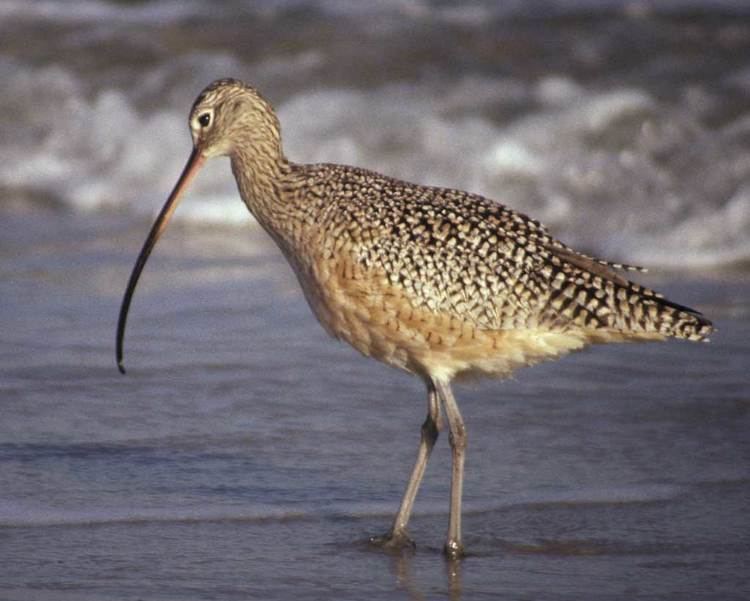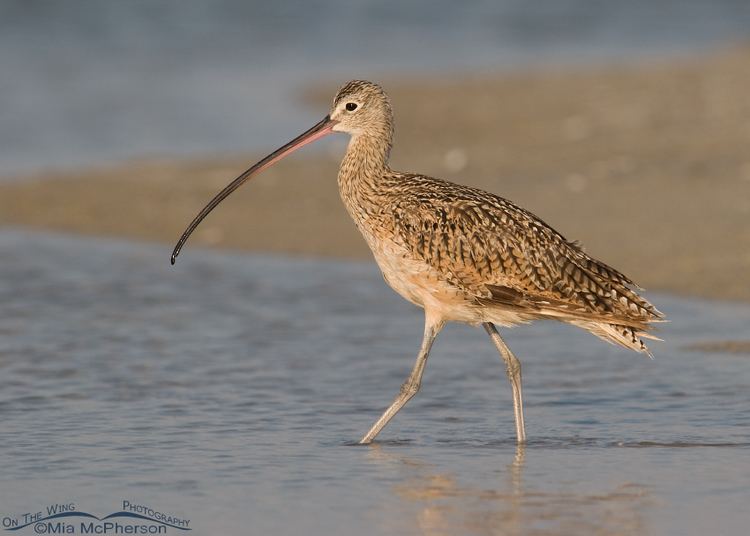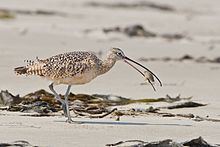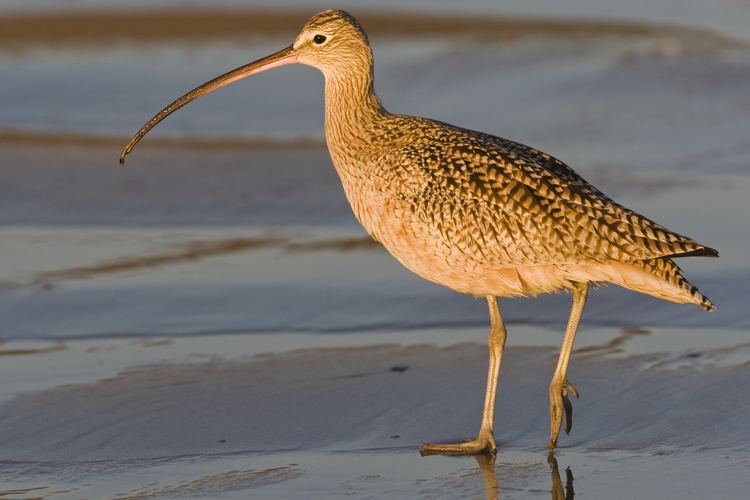Genus Numenius Higher classification Curlew | Phylum Chordata Family Scolopacidae Scientific name Numenius americanus Rank Species | |
 | ||
Similar Bird, Curlew, Marbled godwit, Sandpiper, Willet | ||
Long billed curlew
The long-billed curlew (Numenius americanus) is a large North American shorebird of the family Scolopacidae. This species was also called "sicklebird" and the "candlestick bird". The species is native to central and western North America. In the winter, the species migrates southwards, as well as towards the coastline.
Contents
- Long billed curlew
- Wyoming long billed curlew study
- Description
- Breeding
- Feeding
- Conservation status
- References

Wyoming long billed curlew study
Description

The long-billed curlew is the largest nesting or regularly occurring sandpiper in North America. It is 50–65 cm (20–26 in) long, 62–90 cm (24–35 in) across the wing and weighs 490–950 g (1.08–2.09 lb). Its disproportionally long bill measures 11.3–21.9 cm (4.4–8.6 in), and rivals the bill of the larger-bodied Far Eastern curlew as the longest bill of any shorebird. Adults have a very long bill curved downwards, a long neck and a small head. The neck and underparts are a light cinnamon, while the crown is streaked with brown. This species exhibits sexual dimorphism, the female having a much longer bill than the male.
Breeding

Their breeding habitat is grasslands in west-central North America. The species displays an elaborate courtship dance during breeding season. Fast and looping display flights are also common. A small hollow is lined with various weeds and grasses to serve as the nest. Four eggs are always laid as this is a characteristic of shorebirds. The eggs vary in hue from white to olive. The long-billed curlew is a precocial bird, and the chicks leave the nest soon after hatching. Both parents look after the young.
Feeding

The bird usually feeds in flocks. Using its long bill, it probes the mud near its habitat, foraging for suitable food. The usual food consists of crabs and various other small invertebrates. The species also feeds on grasshoppers, beetles and other insects. This bird has occasionally been known to eat the eggs of other birds.
Conservation status
The population was significantly reduced at the end of the 19th century by hunting. Numbers have rebounded somewhat in more recent times. It was formerly classified as a Near Threatened species by the IUCN, but new research has confirmed that the long-billed curlew is again common and widespread. Consequently, it is downlisted to Least Concern status in 2008.
Candlestick Point in San Francisco was named after this indigenous bird, and subsequently Candlestick Park stadium inherited the name. Ironically, the species had dramatically declined in the San Francisco area by the early 20th century already, being "practically extinct" in San Mateo County in 1916. By the time the stadium was constructed in the 1950s, the last remnants of the flocks of "candlestick birds" – which formerly numbered in the thousands – were being shot by hunters until, at least temporarily, none were left.
